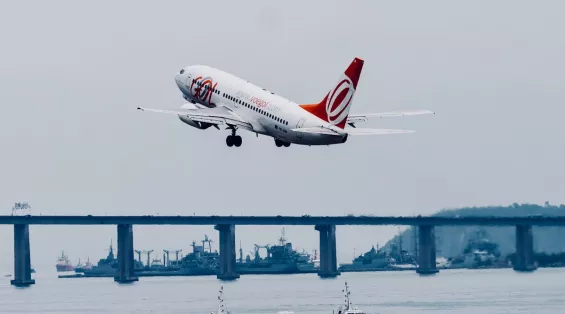Multimodal transportation vs. The challenges of internationalization
Published on 13 October 2021

Transportation activity has boomed over the past few years due to trade globalization, which, from an economic point of view, is good news. But with the rising ebb and flow of people and goods, Supply Chain players are being forced to rethink their business strategy to adjust to demand and comply with regulatory standards. In light of these observations, multimodal transportation stands out as a wise solution to meet consumer needs and tackle important road saturation issues. And with new methods shaking things up internationally and inspiring innovation in transportation and logistics, things couldn’t be better!
International transportation faces new challenges
Today, international Supply Chains are bound by a myriad of factors that call for consideration when offering the best transportation solutions. But exactly which criteria need to be met in order to satisfy consumer demand on a global level?
New consumer trends
Consumer habits are as diverse as countries and residential areas are varied. Additionally, customer expectations regarding in-store shopping are changing, and demand in delivery services is on the rise. Evolving consumption patterns are obvious culprits behind the new challenges faced by logistics services.
One size no longer fits all
Contrary to what we’ve grown used to thinking, globalization can no longer be confused with standardization. One size does not fit all. And it would in fact be dangerous to evade the certainty that consumer habits vary widely from one country to another.
Companies involved in international trade—export specifically—must be able to closely address local demand, and tailoring supply is the new key to conquering the global market.
The impact of culture on customer profiles
To succeed in the international arena, brands will need to take culture-driven consumption patterns, in essence regional specificities, into consideration when developing trade strategy.
E-commerce shares similar characteristics in Europe and in the US. But in other countries, the trend takes on completely different forms, particularly in the service sector. For example, companies in China are tackling demand from two categories of consumers: urbanites seeking quality and services, and rural citizens interested in bulk-buying cheap products.
On the very promising African market, professionals are placing high hopes on banking services and infrastructure to catch up on missed opportunities. The Middle East and North Africa stand strategically at a crossroads of international routes, with ongoing social and political change in Libya, Syria and Yemen as an encouraging sign of good prospects.
Demand diversification and growing urbanization
From a sociological standpoint, there is a global trend towards urbanization. A UN study published in May 2018 predicts that the world’s urban population will increase from 55% in 2018 to 70% in 2050—an expansion that will inevitably see shifts in consumer expectations and needs. Today, customers prefer smaller stores with less storage space, and are increasingly drawn to home delivery services and click & collect online shopping.
While it is true that customers are increasingly buying commodities online, they’re also thirsty for different in-store shopping experiences, which is why businesses that rely on low prices and self-service are now calling their entire strategy into question. They’ll also need to adapt to a growing middle class whose needs, although uniform when it comes to basic supply and the provision of services, are becoming more diverse regarding products with better margins.
One of the main challenges for global transportation is undeniably delivery time—something that Supply Chain stakeholders are all too familiar with as they struggle with infrastructure capacity and labor scarcity.
Infrastructural capacity: a serious challenge to overcome
Every transportation company, regardless of vehicle type, is dealing with network saturation. New solutions are necessary to advance transportation methods, particularly when it comes to capacity.
When globalization reaches its limit
Ocean freight makes up for more than 90% of international trade and is the cheapest mode of transportation today. But it is losing touch with current trade challenges due to a capacity crisis causing delays which themselves entail negative consequences.
Increasing the capacity of container ships is no viable solution to the problem because it also limits port capacity to receive larger volumes of cargo. It is rare to find infrastructure that caters to jumbo vessels with adequate installations for loading and offloading freight.
As for door-to-door deliveries, road transportation is by far the go-to option for flexibility and cost-effectiveness. A shortage of truck drivers in both Europe and North America is, however, hindering development opportunities in the sector.
Rail freight has also reached its peak with high damage rates due to disparate infrastructure across Europe. A trade route world war is currently at play, backed by substantial financial investment.
Addressing road transportation challenges
Several options today could potentially remedy the road freight crisis.
-
Investing in autonomous vehicles
Autonomous vehicles are undoubtedly the future of transportation, provided of course that regulation undergo reform and that citizens come to accept this kind of novelty in the transportation sector. On the tech side, everything is ready for kick off, but other aspects are delaying more widespread implementation. A clear example is the recent case of French haulage firm Deret. Due to inadequate regulatory framework in favor of green vehicles, the firm’s electric trucks were denied access to central Paris on multiple occasions during the first days of the French capital’s road space rationing policy.
-
Transforming rail freight
As its first move on the path to transformation, the rail sector commissioned a new railway link between China and the Netherlands with the first freight train pulling in to Rotterdam port in 2015, completing a journey of only 18 days as opposed to 44 by ocean freight—an inspiring performance.
As punctuality issues remain to be addressed, several rail-devoted industries are currently trying out new technologies designed to mitigate such risks. Transport management company IDEO (a subsidiary of ID Logistics) and Lille-based start up Everysens have partnered to develop connected train wagons with built-in IoT sensors for the French bottled water company Danone Eaux.
-
Staying open to alternative solutions
Other attractive solutions have been undertaken to provide answers to all sorts of issues. Steve Jobs, for example, invested USD 50 million in air freight space to make sure Apple’s translucent blue iMacs arrived in time for Christmas.
A revolution is underway and international corporations have no choice but to embrace it. To think global, they must mobilize resources to act locally, according to market context and specificities.
Can multimodal transportation meet consumer demands?
Global trade entails international sourcing, delocalization of production sites, and higher flows of goods—each of which represents challenges on the logistics front. To overcome them, Supply Chain actors are increasingly turning towards multimodal transportation. Here’s why.
Historically…
Back in the 1960s, containers were perceived as truly revolutionary in the world of transportation: an invention that would enable seamless trade of goods worldwide, whether by sea, air, rail, road or even river freight. This era introduced the thriving potential of multimodal transportation.
Nowadays, although globalization and major production hubs in Asia have played an influential role in the rapid development of maritime freight, other means of transportation are still necessary to reach end consumers. The greater portion of goods transit happens “overseas”—by sea or air freight—but the process cannot escape road transportation around trading ports and for home deliveries.
So maritime freight hasn’t been the sole beneficiary of internationalization—road freight and other modes of transportation have managed to grow collaterally. And despite the clear complementarity between maritime and road freight, multimodality is more diverse. Switzerland and Austria for instance have developed rolling highways to carry entire road vehicle assemblages by train, to improve regularity and keep a cap on pollution.
Advantages of multimodal transportation
Multimodal transportation (also known as combined transport) is an alternative to 100%-road freight that combines at least two different modes of transportation to complete a journey from production units to end users. The loading unit (container) stays the same throughout transit, so transfer from one mode to another doesn’t require any offloading of goods.
A look at some of the advantages of multimodal transportation explains why Supply Chain stakeholders are so enthusiastic about it:
-
Quicker delivery
-
Better security of goods
-
Optimized transportation costs for consumer goods
-
Enhanced loading capacities, exceeding road transport loading capacities
-
Reduced environmental footprint
A balance to strike between urban logistics and quality of life
Accounting for nearly 20% of merchandise transportation costs, last-mile delivery is agenda item number one for logistics specialists worldwide: organizational frameworks need to be developed to align with business trade strategies and comply with existing urban and environmental policies.
This could be a case for multimodal transportation to use its influence. In fact, combined transport experiments are already multiplying and shared logistics platforms are materializing in urban areas.
-
A few examples of Supply Chain multimodality
Several firms are already getting things underway as they invest in new multimodal transportation systems. French retail chain Monoprix has opted for a rail–road freight combination to supply its stores in central Paris. Goods are transported by rail from the warehouse to the logistics platform in Bercy, where road transportation takes over to complete the transit via trucks running on natural gas for store deliveries, and electric vehicles for home deliveries.
Furthermore, French grocery store chain Franprix (Groupe Casino) has recently converted to city delivery via river transportation following a partnership with XPO Logistics, Ports de Paris and French navigation authority Voies Navigables de France.
-
Urban hubs in full bloom
The logistics sector certainly hasn’t said its last words and plenty of multimodal supply system initiatives are emerging, including in Lille, Saint-Etienne and Paris—proof of a strong desire to seek out innovative solutions.
In Lille, northern France, the multimodal urban distribution center in operation in the city’s port area since 2015 has enabled capacity expansion ahead of opening up pooled delivery opportunities for distributions to the city’s center. Similarly, metropolitan Saint-Etienne in central France has been referred to as a “laboratory” with its innovative shared platform for the distribution of goods throughout the city via a fleet of electric vehicles.
Meanwhile in Paris, a project called Chapelle International—perceived as extremely ambitious from an urban logistics point of view—aims to reintroduce railway freight into the French capital by building a huge logistics hub of over 485,000 sq. feet, on a railway brownfield in Porte de la Chapelle, north of Paris’s 18th arrondissement.
In the face of these numerous challenges resulting from trade globalization, multimodal transportation has a strong case for becoming the ideal solution in the current context. Experimentations in combined transport are in full swing, and innovation is pouring in from all sides. All that’s left to do is find the right balance on the regulatory front and encourage innovation to allow actors in the Supply Chain to transition in the most effective way possible.

